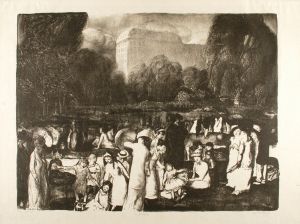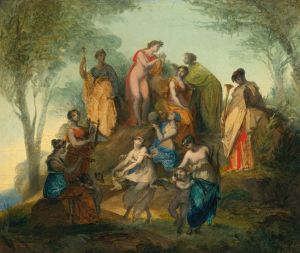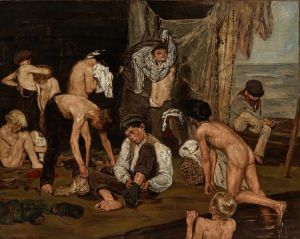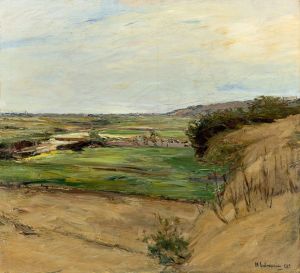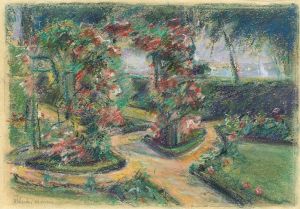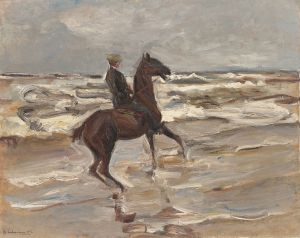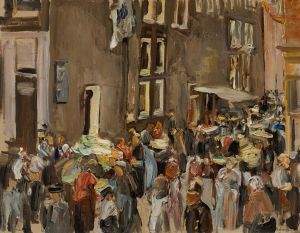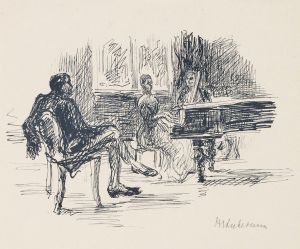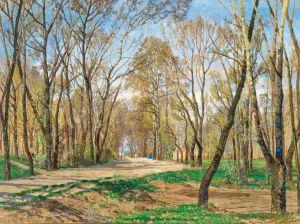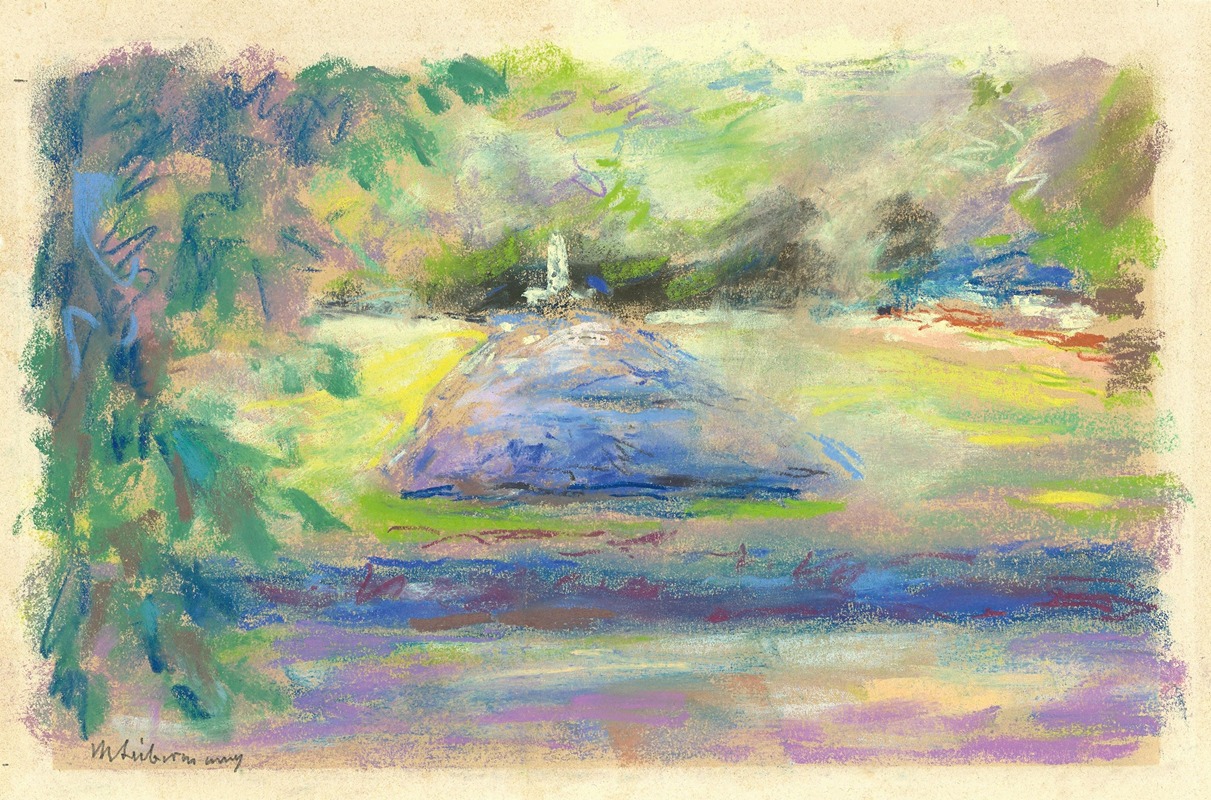
Die Blumenterrasse in Wannsee mit Blick auf den Fischotterbrunnen
A hand-painted replica of Max Liebermann’s masterpiece Die Blumenterrasse in Wannsee mit Blick auf den Fischotterbrunnen, meticulously crafted by professional artists to capture the true essence of the original. Each piece is created with museum-quality canvas and rare mineral pigments, carefully painted by experienced artists with delicate brushstrokes and rich, layered colors to perfectly recreate the texture of the original artwork. Unlike machine-printed reproductions, this hand-painted version brings the painting to life, infused with the artist’s emotions and skill in every stroke. Whether for personal collection or home decoration, it instantly elevates the artistic atmosphere of any space.
Max Liebermann (1847-1935) was a prominent German painter and printmaker, and one of the leading proponents of Impressionism in Germany. His work often depicted scenes of everyday life, landscapes, and portraits, characterized by loose brushwork and a focus on light and color. One of his notable works is "Die Blumenterrasse in Wannsee mit Blick auf den Fischotterbrunnen" (The Flower Terrace in Wannsee with a View of the Otter Fountain).
This painting is part of a series of works Liebermann created at his summer residence in Wannsee, a picturesque area near Berlin. Liebermann purchased the property in 1909 and transformed it into a beautiful garden, which became a frequent subject of his paintings. The garden at Wannsee was designed with the help of Alfred Lichtwark, the director of the Kunsthalle Hamburg, and featured a variety of flowers, trees, and sculptures, including the Otter Fountain.
"Die Blumenterrasse in Wannsee mit Blick auf den Fischotterbrunnen" captures a serene and idyllic view of the garden terrace, adorned with blooming flowers and overlooking the Otter Fountain. The fountain, created by sculptor August Gaul, features playful otters and adds a whimsical touch to the tranquil setting. Liebermann's use of light and color in this painting exemplifies his Impressionist style, with dappled sunlight filtering through the foliage and reflecting off the water.
The painting reflects Liebermann's deep appreciation for nature and his ability to capture the beauty of his surroundings. His garden at Wannsee provided a sanctuary and a source of inspiration, allowing him to explore the interplay of light and shadow, as well as the vibrant colors of the flowers and greenery. The composition of the painting is carefully balanced, with the terrace and fountain serving as focal points, framed by the lush vegetation.
Liebermann's works from Wannsee, including "Die Blumenterrasse in Wannsee mit Blick auf den Fischotterbrunnen," are celebrated for their intimate and personal nature. They offer a glimpse into the artist's private world and his connection to the natural environment. These paintings also reflect the broader cultural and artistic movements of the time, as Liebermann was influenced by the French Impressionists and their emphasis on capturing the fleeting moments of everyday life.
Throughout his career, Liebermann was a prominent figure in the German art scene, serving as the president of the Berlin Secession and later the Prussian Academy of Arts. His contributions to art were recognized and celebrated, although his career was marred by the rise of the Nazi regime, which targeted him due to his Jewish heritage. Despite these challenges, Liebermann's legacy endures, and his works continue to be admired for their technical skill and emotional depth.
"Die Blumenterrasse in Wannsee mit Blick auf den Fischotterbrunnen" remains a testament to Liebermann's artistic vision and his ability to find beauty in the everyday. It is a cherished piece that captures a moment of peace and tranquility, inviting viewers to share in the artist's appreciation for the natural world.





